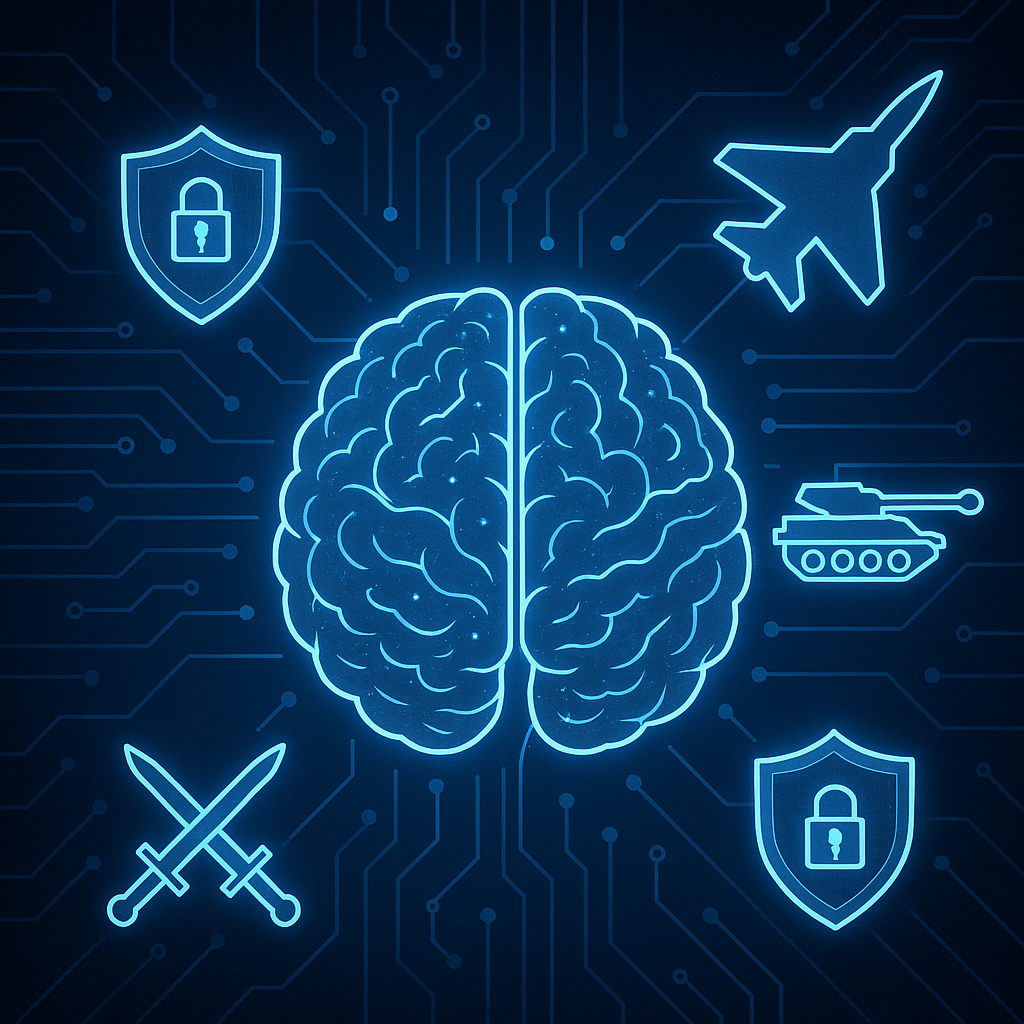Navigating the AI Frontier: A Compliance Imperative in Cyber and Strategic Domains

The rapid advancements in artificial intelligence (AI) present a significant paradigm shift, not only in technological capabilities but also in the realm of compliance. Organizations and governments alike are grappling with the imperative to understand, regulate, and ethically manage the profound impact of AI on cybersecurity and military strategy. The dual-use nature of AI demands a proactive and comprehensive approach to compliance, ensuring both security and responsible innovation.
The Cybersecurity Compliance Landscape: Addressing AI-Driven Threats and Defenses
The emergence of AI in cybersecurity introduces a complex web of compliance considerations. On the one hand, AI offers promising tools for enhancing defensive capabilities. Frameworks like the one proposed by Google DeepMind aim to provide a systematic approach to evaluating AI's cyber capabilities. By adapting established cybersecurity frameworks such as the Cyberattack Chain (Lockheed Martin, 2025) and the MITRE ATT&CK framework (Strom et al., 2018), organizations can gain a structured lens to analyze AI-enabled threats and identify potential gaps in their defenses. This structured approach is crucial for meeting evolving security standards and regulatory requirements.
However, the compliance challenge extends to the responsible use of AI in offensive security evaluations and red teaming. While AI-enabled adversary emulation can enhance testing effectiveness, it must be conducted within ethical and legal boundaries. Organizations need to establish clear guidelines for the development and deployment of AI-powered offensive tools, ensuring they do not inadvertently contribute to actual cyber threats.

Furthermore, the evaluation benchmarks used to assess AI's cyber skills, such as Capture the Flag (CTF) challenges and knowledge benchmarks, require careful consideration from a compliance perspective. The results of these evaluations must be interpreted with an understanding of their limitations in real-world scenarios. Compliance efforts should focus on translating these findings into actionable defense strategies, ensuring that investments in AI security technologies and incident response protocols are effectively targeted. The development and adherence to industry best practices and standards for AI in cybersecurity will be crucial for navigating this evolving threat landscape.
Strategic Military AI: Compliance with International Norms and Ethical Principles
The integration of AI into military strategy introduces a host of new compliance challenges at both national and international levels. The UK MOD and FCDO commissioned a study by RAND Europe to develop a conceptual framework for understanding the strategic risks and opportunities of military AI. This framework emphasizes the need for a structured and multidisciplinary approach to mapping potential strategic risks and opportunities.
A key compliance consideration is the dual-use nature of AI technology. Innovation is largely driven by the private sector for civil and commercial uses, making it essential for defense organizations to establish robust mechanisms for monitoring and regulating the development and deployment of AI with military applications. This includes ensuring compliance with national defense strategies and international agreements.
Ethical, legal, and policy dilemmas associated with AI in military contexts, particularly concerning lethal autonomous weapons systems (LAWS), are paramount compliance issues. The international community is actively engaged in discussions to establish norms of responsible behavior around military AI. Compliance efforts must align with these evolving norms, ensuring adherence to principles of human control, accountability, and the laws of armed conflict.
The RAND Europe framework highlights the potential for AI to impact an actor's potential and propensity for strategic advantage. From a compliance perspective, this necessitates a careful balancing act between leveraging AI to enhance national security and adhering to international principles of peace and stability. The risk of misperception and unintended escalation in an environment of intensifying strategic competition over AI underscores the importance of transparency and confidence-building measures (TCBMs). Compliance with these measures can help mitigate the risk of conflict.
Furthermore, the potential for AI to be misused by non-state actors necessitates the development of mechanisms to restrict the proliferation of military AI to these entities. International cooperation and intelligence sharing are crucial for ensuring compliance with efforts to prevent the misuse of AI for harmful purposes.
The Path Forward: Towards a Robust AI Compliance Architecture
Navigating the AI frontier in cyber and strategic domains requires a proactive and adaptive approach to compliance. Key elements of this approach include:
- Developing comprehensive ethical guidelines and codes of conduct for the development and deployment of AI in both cybersecurity and military applications.
- Establishing clear legal and regulatory frameworks that address the unique challenges posed by AI, including issues of accountability, transparency, and control.
- Promoting international cooperation and the development of global norms for the responsible use of military AI.
- Implementing robust verification and compliance mechanisms to ensure adherence to agreed-upon standards and regulations.
- Fostering a multi-stakeholder approach that involves governments, industry, academia, and civil society in the development of AI governance and compliance frameworks.
- Investing in education and awareness programs to ensure that individuals involved in the development and deployment of AI understand the associated compliance requirements and ethical considerations.
In conclusion, the AI revolution demands a fundamental shift in how we approach compliance in the critical domains of cyber and strategy. By proactively addressing the ethical, legal, and security implications of AI, and by fostering collaboration and the development of robust governance frameworks, we can strive to harness the benefits of this transformative technology while mitigating its inherent risks and ensuring a more secure and stable future.






